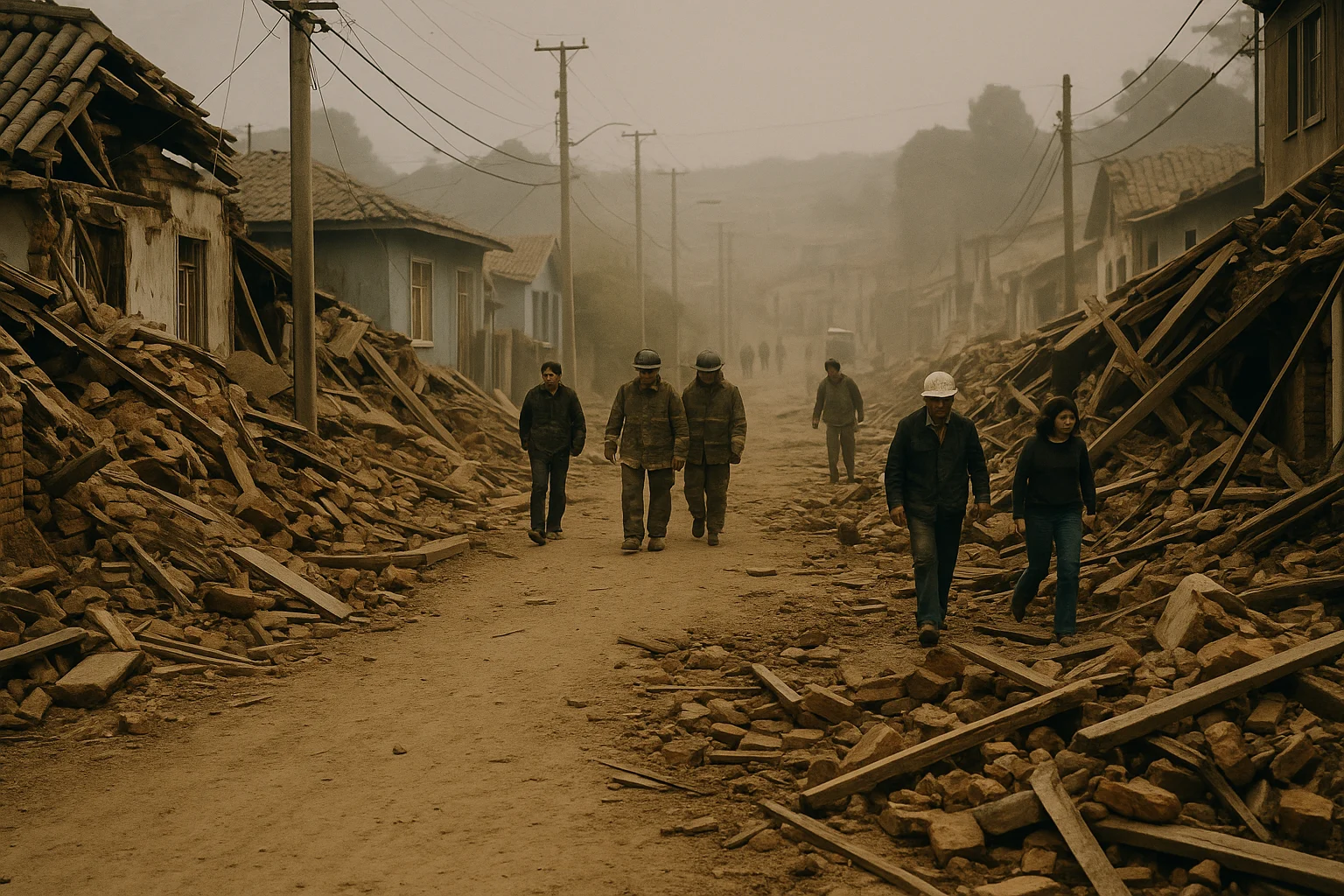
1985 Algarrobo Earthquake
by: The Calamity Calendar Team
March 3, 1985
A Night That Changed Chile
It's often said that disaster strikes when least expected, and for the people of Chile’s Valparaíso Region, March 3, 1985, was just another ordinary day — until the ground beneath them buckled with a fearsome force. Chile is no stranger to seismic activity, cradled along the "Pacific Ring of Fire," but the tremors that rippled through that Sunday night would be etched into memory as one of the most devastating moments in the nation's history.
The Calm Before the Quake
February of 1985 brought whispers of seismic unease. Small, seemingly innocuous tremors grumbled beneath the surface of Valparaíso, hinting at unseen tensions along the boundary of the Nazca and South American plates. Such tremblings, however, seldom warranted alarm in a country practically accustomed to the Earth's unpredictable murmurs. Life continued, unwary of the geological drama set to unfold.
Yet beneath Chile, the Earth was preparing a violent schism. In retrospect, geologists acknowledge the subtle hints — an increase in minor seismic activities — but at the time, these signals were mere static amid the ordinary hum of life.
March 3, 1985: When the Earth Roared
At precisely 22:47 local time, the Earth beneath Algarrobo, a coastal town in the Valparaíso Region, unleashed its pent-up fury. What would later be pegged at a magnitude of 7.8 by the meticulous calculations of geologists went beyond numbers in its terrifying reality.
Buildings swayed and then crumbled, spilling their guts into the streets. Power lines snapped, showering sparks onto the debris-strewn avenues. Reality fissured alongside concrete, as strong aftershocks soon followed, compounding the chaos. Compelled by a visceral instinct, families clung to one another in terrified huddles, while parents shielded their children from ever-shifting foundations.
Minutes turned into hours, and the immediate aftermath was a cacophony of cries, both for help and from pain. As rescue efforts surged into action, the community's resilience became apparent amidst the wreckage. Neighbors became first responders, clawing through rubble with bare hands, each pulled body a human cord of hope amid a landscape grayed by dust and desperation.
Thanks for subscribing!
Picking Up the Pieces
The statistics paint a stark picture: 177 lives lost, and over 2,575 injured. Yet the story in those numbers is less easily told. Each tally represents a life's abrupt transformation, a family’s new reality amidst wreckage that once was a home.
Infrastructure collapsed under the weight of the tremors, reducing buildings to ruins reminiscent of a war zone. Valparaíso and Santiago counted their losses in the millions, with over 142,489 homes reported damaged or obliterated. In the face of such devastation, the Chilean government, the military, international aid organizations, and everyday citizens contributed to recovery efforts, solidifying a scaffold of hope upon which communities could rebuild.
Building Resilience From Ruin
The days and weeks following the earthquake were filled with stories of survival and fortitude. Aid flowed in not only from across Chile but from around the globe. Humanitarian relief brought much-needed supplies and services, while construction crews began the arduous task of clearing debris, laying down the foundation for stronger structures.
In the wake of the disaster, Chile initiated a determined campaign to reassess and fortify its building codes. Recognizing the heightened risk posed in regions along subduction zones, the nation’s policy-makers adopted stricter standards, making seismic resilience a blueprint for the future.
Lessons From the Earth
Today, nearly four decades later, the 1985 Valparaíso Earthquake serves as both a grim reminder and a call to preparedness. The scars left by that night echo in the stringent regulations that now protect Chile’s coastal cities.
Developments in seismic monitoring and engineering have enabled Chile to face its seismic challenges with heightened awareness and capability. Global attention is drawn to these advancements, as they offer a template for earthquake preparedness worldwide. This leap in knowledge, born out of previous pain, has turned the memory of March 3 into a beacon for future resilience.
Stay in the Loop!
Become a Calamity Insider and get exclusive Calamity Calendar updates delivered straight to your inbox.
Thanks! You're now subscribed.